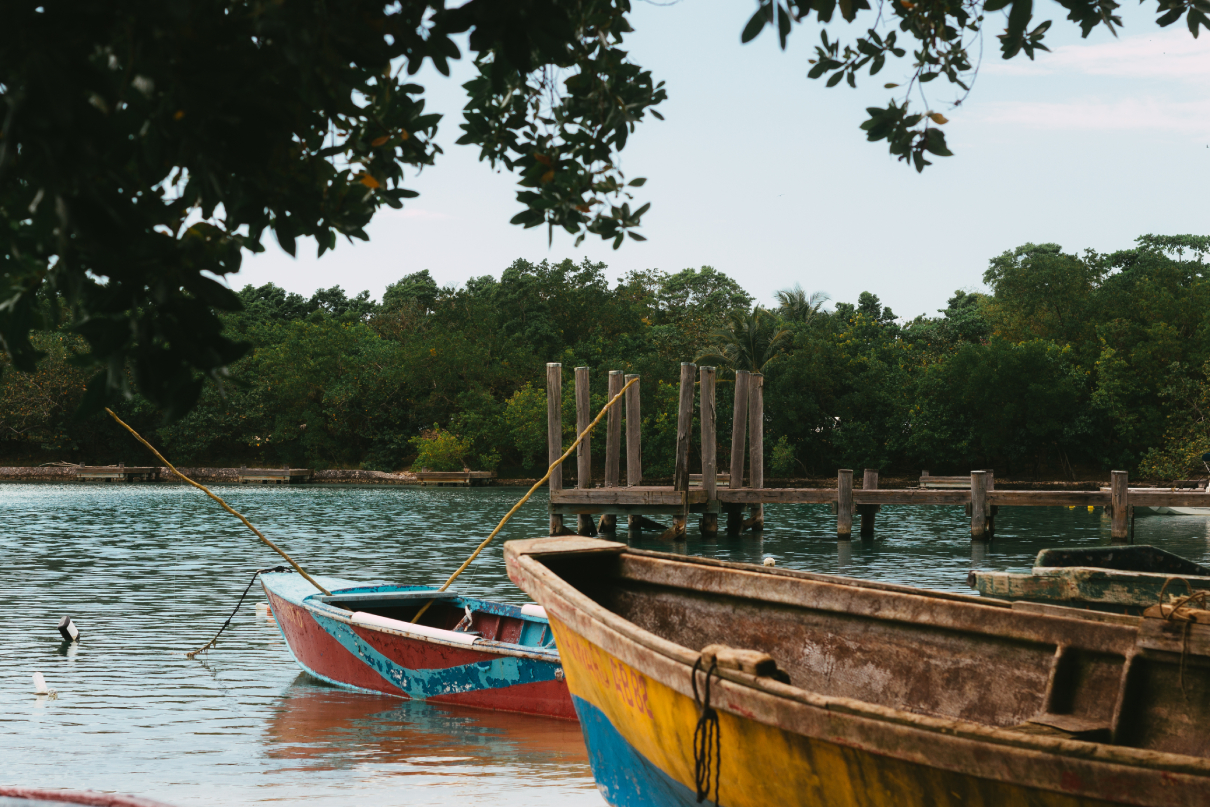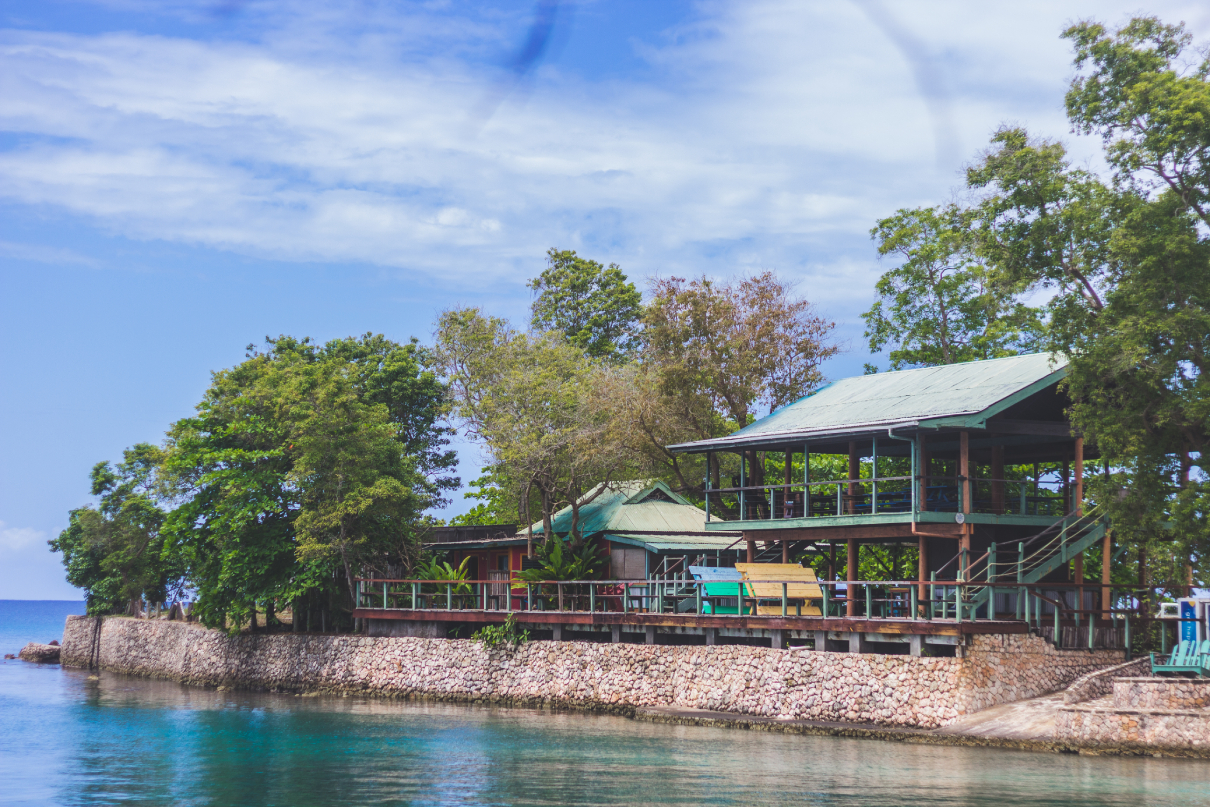- A group of local fishermen and tourism industry stakeholders established a fishing sanctuary several years ago in Oracabessa Bay in response to a decline in vital Jamaican coastal life like coral and herbivorous fish.
- Surveys indicate an increase in reef health due to the efforts despite challenges, and the conservation model is set to be replicated at multiple other sites in Jamaica.
The coastal ecosystem of the Caribbean is as unique as the region’s year-round humid tropical climate. On the island of Jamaica, picturesque deep-blue waters and rich biodiversity are among the country’s top tourism draws. That has endured despite the industry’s forced shutdown due to the COVID-19 pandemic. The Jamaica Tourist Board (JTB) indicates 1.1 million visitors arrived during the first 10 months of 2020, significantly less than the 3.4 million over the same period in 2019.
Reefs and other essential systems such as mangroves — crucial for mitigating coastal flooding and storm damage, and maintaining the water’s diversity — are at risk. Global sea level rise, according to the University of the West Indies, was estimated at about 17 centimeters (6.7 inches) over the 20th century. In countries like Jamaica, where pearly white beaches boast stunningly smooth sand made by coral skeletons and carbonate deposits from the exotic reefs, such a change is notable.
The increase in pollutants like microplastics and chemical runoff from agriculture, also increases coral reef bleaching and stimulates algae growth. These are among the factors compounding the threats to the region’s waters.
Overfishing has had a major impact on reef destruction, according to two regional Red List reports published in 2017 by the IUCN. For a country like Jamaica, where much of the food supply is reliant on coastal life, resolving reef-related issues like overfishing are more complex than at first glance.

With fewer bottom feeders like the reef-cleaning Scaridae or parrotfish, algae growth on the coral reefs goes unchecked, which stifles the coral’s development and health. The reef is also a home for fish, and unhealthy reefs mean fewer fish. Parrotfish are a popular part of the local diet, however, so this creates a kind of dilemma.
Where tradition once involved targeting this fish for food, now some in Jamaica are thinking long and hard about how they can protect, preserve and restore them.

Crafting local solutions
In 2011, a small group of fishermen in the town of Oracabessa, in the parish of St. Mary on Jamaica’s north coast, came together with the GoldenEye Foundation to establish a fishing sanctuary. Their aspiration was simple: enclose and enforce a no-fishing zone along the famous scenic strip of Oracabessa Bay’s beach, where the 12 original novels in the James Bond series were penned by Ian Fleming, and two of the Bond films were shot.
Today, a group of 18 — from board members to fishermen to the supervisors and coral gardeners — has managed to test, prove, maintain and upgrade a cohesive vision of marine conservation.
Their vision is borrowed from other countries around the world, like Indonesia, the United States and Belize, which inspired their coral-gardening techniques. As they have learned and applied over the years, the Oracabessa Bay fishing population has grown.
“When we can protect the fish like this, we will see more,” Ivanhoe Rose, one of the captains working with the sanctuary for nine years, said in a recent interview. “Even in the bay here, sometimes in the evening or morning time you will see a lot of fish like the tarpon or the snook.”
Reports like these by once-struggling fishermen indicates a regeneration in the fishing population. Jamaica’s National Environment and Planning Agency’s (NEPA) national reef survey report backs these claims, recording herbivorous fish abundance of 6,792 grams per 100 square meters in 2020, a significant increase from 1,192g/100m2 in 2013. This means one very important thing: whatever they are doing at Oracabessa Bay’s fishing sanctuary is working.
Before the sanctuary
Before the years refined the Oracabessa group’s vision for marine conservation and granted them new roles as stewards of the sea, they were humble fishermen.
Often, it is those who are closest to the elements of nature who feel the strongest call and commitment toward its preservation, as was the case for fishermen involved in the project like Ivanhoe Rose and David Murray. It was certainly the case for Lenford Dacosta, a fisherman-turned-coral-gardener.
According to these fishermen, who now all work with the sanctuary, the shortage of fish was becoming a serious issue for the fishing community and for tourist attractions such as snorkeling and diving along the beach in Oracabessa Bay.
“Many of us start out fishing very young. I started at 13 years old, and had my own fish gun,” Dacosta said, referring to his homemade wooden speargun. “My friends and I used to fish on the shores, but as we grew in age we became bolder, so by 16, 17 we were out in the reef shooting and catching. But we noticed the fish population began to decline so we had to go deeper to catch them.”
The worse it became, the farther out to sea the fishermen needed to venture to find a catch, and eventually they had to start diving as well. That’s when a transformation began to take place. Once a fisherman begins to dive, the way he sees the world above and below water completely changes.

In the case of Dacosta and others, who have been fishing and interacting with the ocean all their lives, diving has been a new experience. And for Dacosta, it heralded a shift in his world view.
“It wasn’t until I started diving that I really saw the damage underwater and realized how things we do contribute,” he says. But diving can be dangerous. “I used to bleed,” he recalls. “A lot of us used to cough up blood when we’re done diving. Because of the expansion and overwork of our lungs.”
What he found beneath the water’s surface was much scarier than the risks of diving: dead or dying corals.
“There was a lot of damage to the coral reefs, some of the fishermen used to drop the fish pots on the reefs and break them. Also a lot of pollution, all different kinds. That’s when I heard about this sanctuary and its programs and the coral gardening immediately caught my interest.”
From there, Dacosta and two other divers got on board with the sanctuary project and went on to get special training and coral-gardening education. By establishing a coral garden and a nursery, gardeners like Dacosta can select the most diverse corals, extract samples from the colony, and place them in the nursery.
After about six to eight months in the garden, the corals become mature enough to replant on the reef and facilitate new growth.
The future of the coral reef and the fish population are locked in a symbiotic relationship. The coral reef also serves as an important buffer against storms, and is home to many species and has one of the most diverse ecosystems on the planet. It’s almost impossible to place a value on it.
In addition, during their feeding, parrotfish grind up inedible calcium carbonate reef material like coral skeletons, which they excrete as the sand that populates the beaches. With less sand, beach erosion becomes more of a risk.

Foundational partnerships
The success of the Oracabessa Bay Fishing Sanctuary is in large part due to the cooperation of parties from both the tourism and fisheries sectors of the country. Both sectors are affected severely by poor reef health.
Travis Graham, executive director of the GoldenEye Foundation, is a firm believer in this combined effort as one of their secrets to success. Graham is well versed in the sanctuary’s rich history, even after just over two years in the role.
“Our marine conservation model is a bit unique,” Graham said in a recent interview. “It’s what we call an ecosystem-based model. It’s rooted in this partnership approach with the community.”
He describes a decidedly symbiotic and collaborative approach in the partnerships.
“Basically all our projects and programs are done in total partnership with the local fishing association. All decisions are made in tandem with the fishers and this collaboration was formalized through the establishment of the Oracabessa Bay Marine Trust.”
The trust is comprised of 50% board members and 50% local fishers, Graham says.
On a recent visit to the sanctuary, freelance dive instructor Shari Kelly made a similar deduction. “When it comes to tourism, the coral plays a huge role in the appearance,” Kelly said. “People want to come here to dive and see things, not just dead coral.”

Plotting the future
The Oracabessa Bay Fishing Sanctuary has an ambitious set of plans for marine conservation, which continues to be modified and adjusted. Goals include replanting 80,000 corals in the sanctuary. A yearly release of approximately 15-20,000 sea turtles each year has seen a total of over 220,000 hatchlings released.
Its success thus far has led the group behind it to inspire and help other areas around Jamaica to do the same. With funding from the Global Environment Facility, through the UNDP, the sanctuary is in the process of bringing its management model to four new locations along Jamaica’s northern coast.
According to Graham, there are projects around Jamaica in Lucea, Grange Pen, Mobay, Salt Marsh on the border between St. James and Trelawny, and Whitehouse Mobay.
“Based on the success that we’ve had here and the model, they have been very receptive in those areas,” Graham said. “We’re at different stages in different locations but overall people are seeing the need for fish sanctuaries.”
The Oracabessa sanctuary coastal environment conservation and biodiversity restoration successes over the last decade bring into focus myriad issues that highlight the country’s growing need for sustainable marine conservation efforts.
The journey to better coastal health for Jamaica is ongoing, but the vision is bearing fruit, which makes for a more compelling concept that can be replicated.
Banner image: An artistic rendition of healthy coral reef coastal ecosystem at Oracabessa Fishing Sanctuary in Jamaica as created by Los Angeles-based artist Marlene Solorio for Mongabay. You can find out more about the artist on Instagram at @m2rl3n3.


